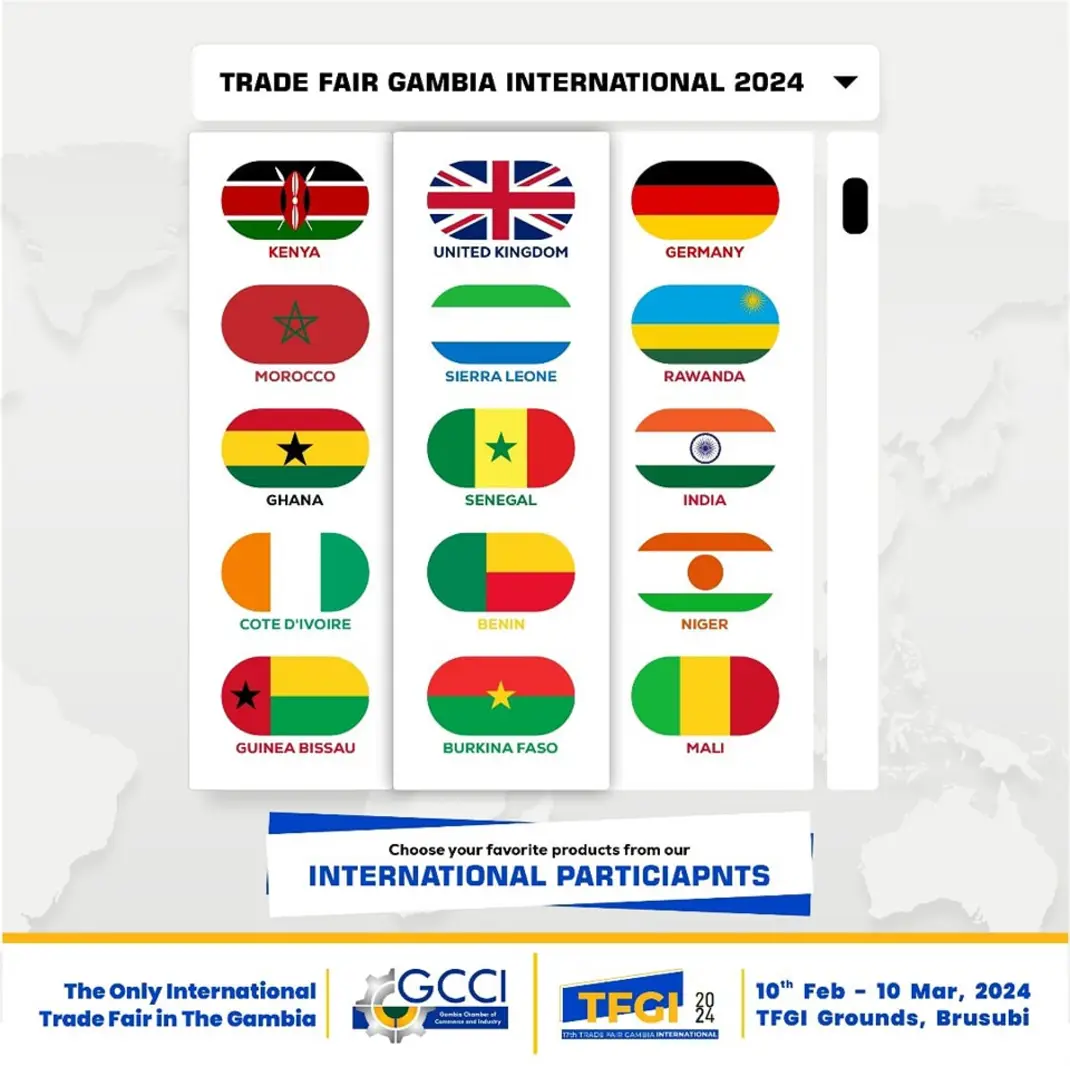
Gambia’s main trading countries
Gambia, a small West African nation along the Atlantic coast, has a unique trade profile shaped by its geography, limited domestic production, and strategic location along the Gambia River. Although the country is heavily reliant on imports, it has also positioned itself as a regional trade hub due to its freeport status and relatively low import tariffs. This has enabled Gambia to engage in trade relations with various international and regional partners, as well as re-export goods to nearby countries. Here’s a breakdown of Gambia’s main trading partners and the nature of its trade with each.
1. China
China has become one of Gambia’s largest trading partners, particularly as a major source of imports. Gambia imports a wide array of goods from China, including electronics, textiles, machinery, and construction materials. These goods are essential for Gambia, which has limited domestic manufacturing capabilities. Chinese exports provide affordable products that meet the needs of Gambian consumers, while Chinese investment in Gambian infrastructure also strengthens this bilateral trade relationship. Gambia’s reliance on Chinese goods reflects a broader trend in West Africa, where China has solidified its position as a key trading partner.
2. India
India is another significant trade partner, particularly in the import of pharmaceutical products, foodstuffs, and manufactured goods. Pharmaceuticals from India are vital to Gambia, given the country’s healthcare needs and limited local production. Additionally, India exports rice, a staple food in Gambia, in large quantities. Indian rice is preferred for its cost-effectiveness and quality, making it accessible to Gambian consumers. In return, India imports some of Gambia’s agricultural products, including groundnuts, although these exports remain limited in scope.
3. Senegal
Senegal is Gambia’s most important regional trading partner due to geographic proximity and cultural ties. The two countries share a border and have a unique relationship shaped by the geographic placement of Gambia within Senegal. Senegal is both a supplier and a market for Gambian goods. Goods from Senegal, such as cement, fuel, and various consumer products, flow easily across the border into Gambia, while Gambian traders export locally produced items and imported goods to Senegal. However, political tensions and customs issues sometimes disrupt trade between the two nations.
4. European Union (EU) Countries
Several EU countries, including the United Kingdom, Germany, and Belgium, maintain trade relations with Gambia. The EU’s role in Gambian trade primarily involves the import of processed foods, machinery, vehicles, and technical equipment into Gambia. Meanwhile, Gambian exports to the EU are largely agricultural, consisting of products like groundnuts, seafood, and horticultural items. The EU’s Everything But Arms (EBA) initiative allows Gambian exports preferential access to the EU market, which encourages trade, though Gambian exports to the EU remain modest.
5. United Kingdom
Historically, the United Kingdom has had a close trade relationship with Gambia, a legacy of the colonial era. While the UK’s role as a direct trading partner has diminished since Brexit, it remains a significant source of goods, particularly food items, vehicles, and machinery. Additionally, many Gambian expatriates in the UK send remittances that stimulate demand for British products in Gambia. This economic connection helps sustain a trade relationship that has historical roots and continues to benefit both countries.
6. United States
The United States is an important trading partner, especially in sectors such as food products, vehicles, and second-hand clothing, which are in high demand in Gambia. Although the trade volume is smaller compared to other partners, U.S. exports play an essential role in the Gambian market. Under the African Growth and Opportunity Act (AGOA), certain Gambian goods can enter the U.S. market duty-free, though Gambia has yet to fully capitalize on this opportunity.
7. Nigeria
Nigeria is a major player in West African trade, and Gambia has leveraged its regional connections to benefit from trade with this powerhouse. Nigeria primarily supplies Gambia with petroleum products and, to a lesser extent, consumer goods. Gambia, in turn, often re-exports these goods to other parts of the region. Nigerian investment in the Gambian financial sector also strengthens economic ties.
8. Mali and Guinea-Bissau
Gambia’s trade relations with Mali and Guinea-Bissau are based on both formal and informal trade flows. These neighboring countries rely on Gambia’s port facilities to import goods, given that they are landlocked. Goods are transported through Gambia’s port in Banjul and then distributed throughout the region. In return, Mali and Guinea-Bissau export products like cashew nuts and agricultural items to Gambia.
Conclusion
Gambia’s trade network reflects its geographical position and economic limitations. The country is highly dependent on imports from countries like China, India, and the EU, with exports largely restricted to agricultural products. Regional neighbors, including Senegal, Mali, and Guinea-Bissau, rely on Gambia’s port for access to goods, creating a dynamic trade flow. As Gambia seeks to develop its economy, diversification of exports and stronger infrastructure may help expand trade with these key partners.




Leave a Reply